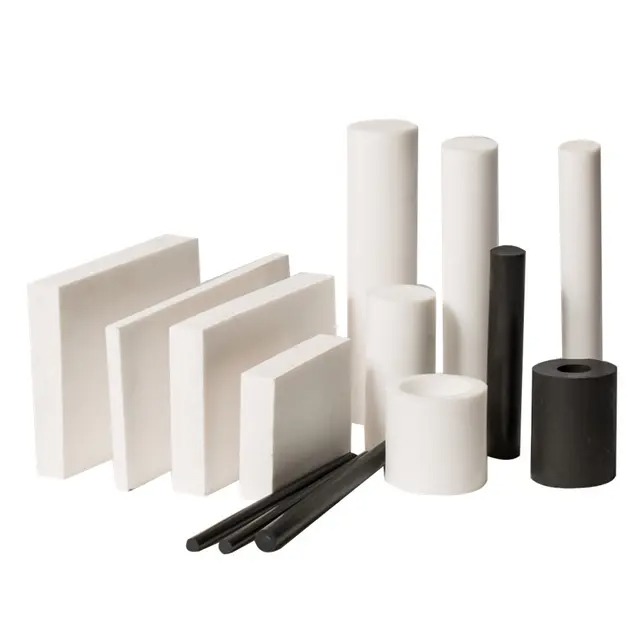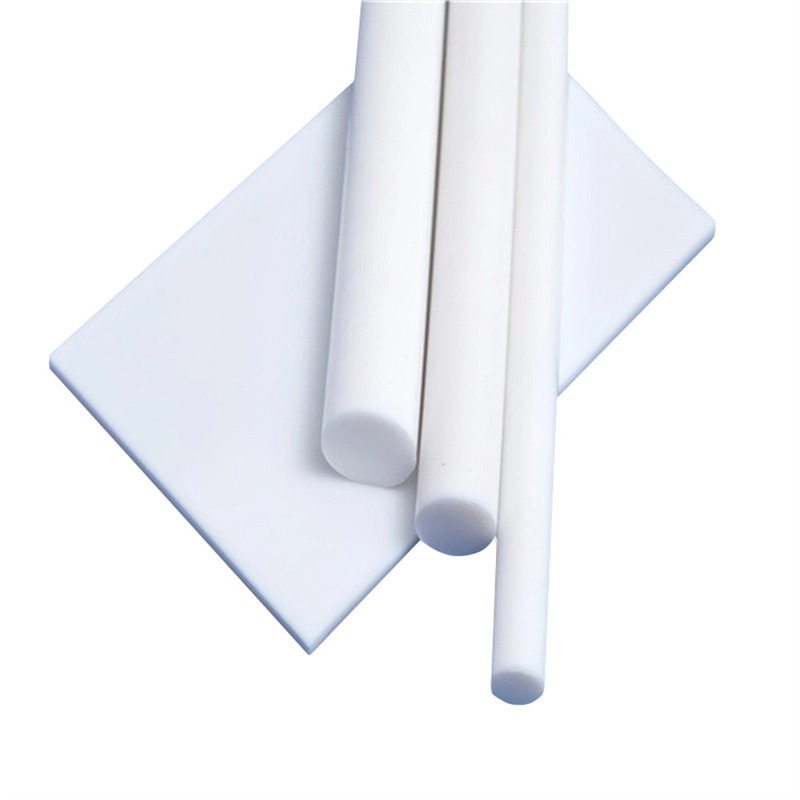Introduction
Polytetrafluoroethylene (PTFE) rods are among the most versatile and widely used engineering plastics in the world. Known for their remarkable chemical resistance, extremely low friction coefficient, and excellent thermal stability, PTFE rods have become indispensable in industries ranging from aerospace to pharmaceuticals. Unlike many conventional plastics, PTFE is not only non-reactive but also maintains its performance across a broad temperature spectrum, making it suitable for both cryogenic conditions and high-heat environments. The unique properties of PTFE, such as its non-stick surface and outstanding electrical insulation characteristics, enable it to replace traditional materials like metals or rubbers in demanding applications. For engineers, manufacturers, and end-users alike, understanding the various uses of PTFE rods provides insight into why this material continues to be a top choice for precision components, industrial equipment, and specialized applications. In this article, we will explore in detail the practical uses of PTFE rods, breaking down their benefits, common industries where they excel, and answering frequently asked questions about their role in modern manufacturing.
Why PTFE Rods Are Different from Other Plastics
One of the primary reasons PTFE rods stand apart from other engineering plastics is their unmatched chemical inertness. While many plastics degrade or react when exposed to strong acids, bases, or solvents, PTFE remains unaffected, making it an ideal choice for environments where chemical exposure is unavoidable. In addition, PTFE rods are capable of maintaining structural integrity at temperatures ranging from –200°C up to +260°C, which makes them suitable for applications involving both cryogenic freezing and high-temperature processing. Another characteristic that makes PTFE unique is its exceptionally low coefficient of friction. This self-lubricating property not only reduces wear on moving parts but also minimizes energy loss in mechanical systems, resulting in longer service life and efficiency gains. Furthermore, PTFE rods exhibit outstanding dielectric strength, which ensures excellent electrical insulation, even under high voltages. These attributes, when combined, mean that PTFE rods are not simply another type of plastic—they represent a material solution engineered to solve problems that many other materials cannot. For industries that demand reliability, safety, and performance, PTFE rods are a trusted and proven choice.

Common Industrial Applications of PTFE Rods
The industrial applications of PTFE rods are vast and diverse, reflecting their adaptability in solving complex engineering challenges. In the chemical industry, PTFE rods are frequently machined into seals, gaskets, and valve components because of their ability to resist corrosion and chemical attack. In the mechanical and automotive sectors, PTFE rods are used for bushings, bearings, and slide plates, where their low friction properties reduce wear and improve efficiency in moving parts. The electrical industry also relies heavily on PTFE rods for insulating components in high-voltage equipment and connectors, thanks to their superior dielectric performance. In the food processing sector, PTFE rods are shaped into non-stick components for mixers, conveyors, and filling machines, ensuring hygiene and compliance with food safety standards. The aerospace and defense industries make use of PTFE rods for parts exposed to extreme temperatures and pressure variations, while the medical industry employs them in surgical instruments, implants, and pharmaceutical machinery. This broad range of applications demonstrates the versatility of PTFE rods and underscores why they continue to be a critical material across multiple sectors.
Advantages of Using PTFE Rods in Engineering
When evaluating material options for demanding applications, engineers often choose PTFE rods due to a combination of advantages that few other materials can match. Firstly, PTFE offers excellent resistance to almost all known chemicals, making it an irreplaceable choice for components exposed to aggressive environments. Secondly, its non-stick properties significantly reduce the chances of contamination or material buildup, which is particularly valuable in food, pharmaceutical, and medical industries where hygiene is paramount. Thirdly, PTFE rods maintain their stability across extreme temperature ranges, meaning they do not deform, melt, or crack under thermal stress. This makes them suitable for both high-temperature sealing and cryogenic insulation. Fourthly, the low friction coefficient contributes to longer equipment life, reduced maintenance costs, and increased operational efficiency. In addition, PTFE is hydrophobic, meaning it repels water and moisture, which helps in preventing corrosion and maintaining performance even in humid environments. Finally, PTFE rods are biocompatible, making them safe for use in medical and food applications. This comprehensive set of advantages makes PTFE rods a go-to choice for industries that demand materials capable of performing under the toughest conditions.
Table: Key Properties and Applications of PTFE Rods
| Property | Description | Typical Applications |
| Chemical Resistance | Unaffected by most acids, bases, and solvents | Seals, gaskets, valve components |
| Temperature Resistance | Stable from –200°C to +260°C | Aerospace, automotive, cryogenic equipment |
| Low Friction | Self-lubricating, reduces wear and energy loss | Bearings, bushings, slide plates |
| Electrical Insulation | High dielectric strength for insulation | High-voltage connectors, electronic parts |
| Non-stick Surface | Prevents buildup and contamination | Food processing machinery, medical devices |
| Biocompatibility | Safe for human contact and medical use | Implants, surgical instruments |
This table provides a concise overview of why PTFE rods are so widely adopted. Each property aligns with a set of industries and applications, highlighting their importance as a multi-functional engineering material.

Frequently Asked Questions About PTFE Rods
1. Are PTFE rods safe for food and medical use?
Yes, PTFE rods are FDA-approved for food contact and are biocompatible, making them safe for medical devices, surgical instruments, and food processing equipment.
2. Can PTFE rods withstand high temperatures?
Absolutely. PTFE rods remain stable and functional across a wide temperature range, from cryogenic levels of –200°C to heat-intensive conditions of +260°C.
3. How are PTFE rods manufactured?
PTFE rods are typically produced through a process known as compression molding, followed by sintering. This ensures uniform density and durability in the final product.
4. Are PTFE rods recyclable?
While PTFE is not recyclable in the same way as many common plastics, specialized recycling methods do exist, primarily involving reprocessing into secondary PTFE products.
5. What makes PTFE different from other plastics like nylon or polyethylene?
Unlike nylon or polyethylene, PTFE offers superior chemical resistance, higher temperature stability, and a much lower friction coefficient, which broadens its usability in extreme applications.
Conclusion
In conclusion, PTFE rods are more than just a standard engineering material; they are a cornerstone of innovation across industries that demand reliability, precision, and durability. From aerospace components that withstand extreme temperature variations to medical instruments requiring biocompatibility, PTFE rods serve as solutions where other materials fall short. Their unique combination of properties—chemical resistance, non-stick performance, electrical insulation, and mechanical durability—ensures they will continue to play a vital role in modern manufacturing. As industries evolve toward more complex and sustainable solutions, PTFE rods are expected to expand their presence in areas such as renewable energy systems, advanced medical technologies, and precision robotics. For businesses, engineers, and innovators looking to optimize performance, PTFE rods represent a material investment that guarantees value over time. Understanding what PTFE rods are used for not only answers a technical question but also reveals why this material remains indispensable in shaping the future of industrial and scientific advancement.























